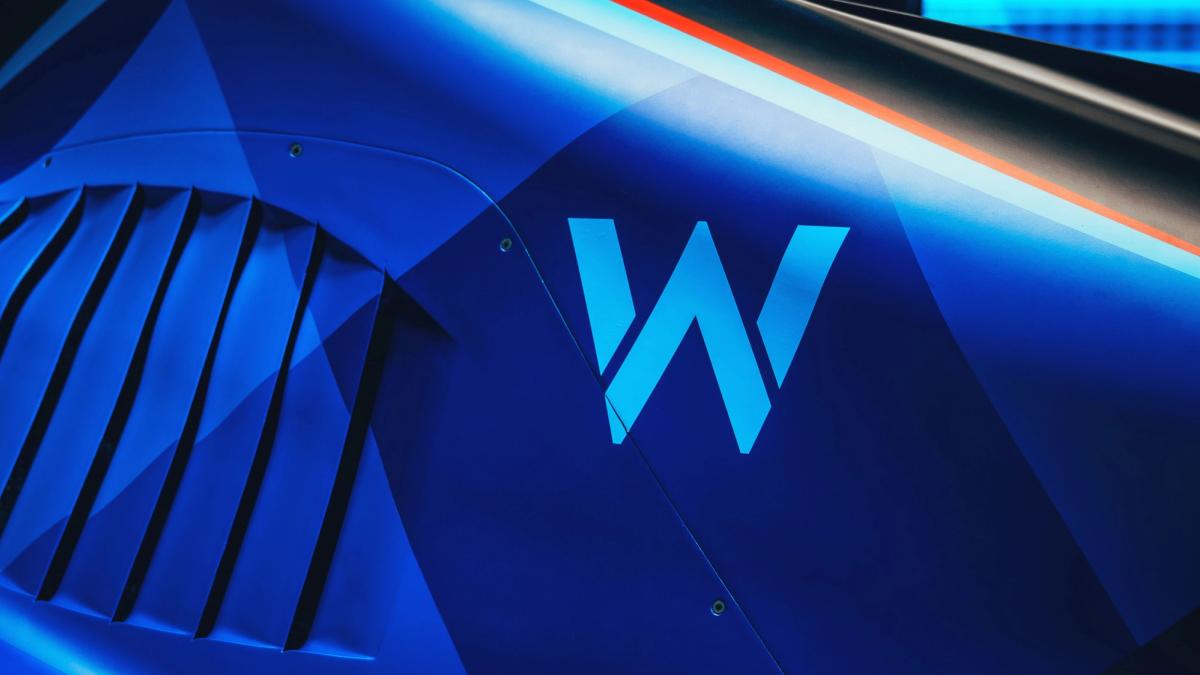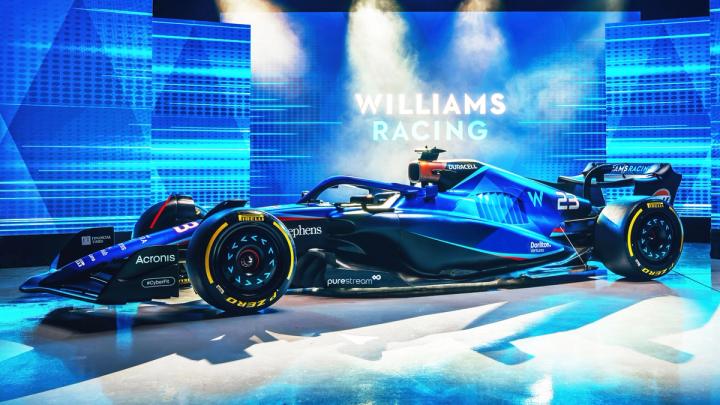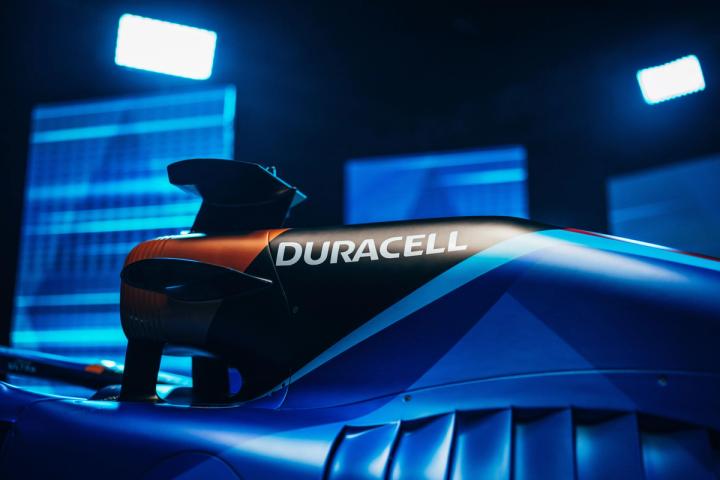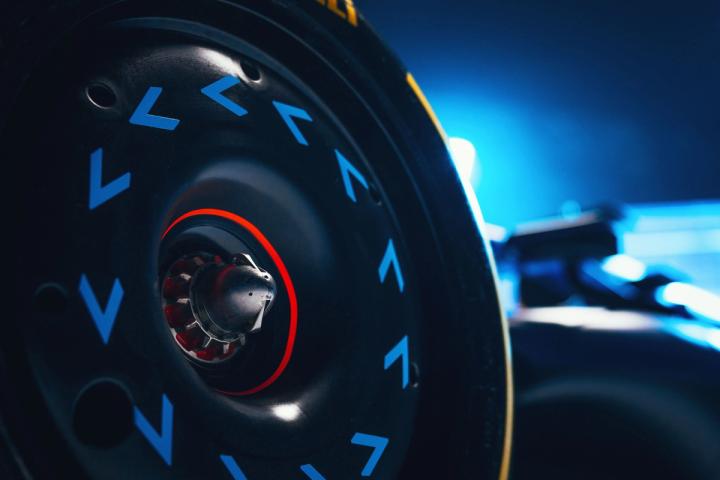“We wanted to make sure that it was slick, exciting and classy, whilst ultimately retaining the brand look and feel.”
These are the four key points that our Head of Creative, Ed Scott, was tasked with whilst designing the livery for our FW45.
Season launches are arguably the most exciting part of Formula 1’s winter, as fans get a first glimpse of the machines that their favourite drivers and teams will be racing in for the upcoming season.
Work begins on these new designs months in advance, meaning Ed and his team will be working on the following season’s look whilst the team are still in the middle of a campaign.
“The process of creating a livery is very long-winded,” Ed explains. “You could turn them around pretty quickly if you wanted, but realistically it takes months because it's not a straightforward process.
“When we develop these liveries, we start with them on the most current car so in our case, part of that process was taking the FW44 from 2022 and evolving our planned 2023 livery to fit onto that car shape.
“We started working on our 2023 livery back in the summer of 2022 and by December, it was properly locked in and ready for car build.”
The 2023 livery takes centre stage during our Season Launch
“Midway through the process, when you have a design in the bag, you then get given the specs and drawings for the following car, our 2023 FW45.
“Those specs and drawings aren't necessarily the same. The bodywork shape, the aero packages, the chassis, they can all be quite different, which then affects the livery.”
“Alongside the bodywork iterations you have different factors that are fed in from a commercial point of view, different factors from a car performance point of view and factors that are linked in from a production point of view.
“All these things have to be taken into account, so unfortunately drawing a pretty picture and laying down what you think works doesn't cut it, the livery has to thread throughout all of those key points.
“We started working on our 2023 livery back in the summer of 2022 and by December, it was properly locked in and ready for car build.”
Our FW45’s livery is an evolution of its predecessor, the FW44 – a design that was the first following a brand refresh for the team.
In the early stages of the design process, Ed can push the limits of the potential livery, before settling on what you’ll see on track this season.
“It’s quite tough to get the balance between ensuring there are notable points of difference, whilst also making sure it doesn’t look like a totally different car.
“It meant that we could play around with it, change the lines, come up with alternative concepts and push the boundaries to make a stark difference.
“Then we reign it back in, it's an exciting process which is ultimately a balancing act.”
Another aspect when creating an F1 car’s livery is incorporating the logos of our partners, a task that involves integration between Ed and the commercial team.
Our current livery is one that Ed considers smart, given it allows for some wiggle room if and when he learns that a new partner is joining the team mid-process.
“It’s smart in the sense that we can actually take sections of livery, adapt it, move it around and change lines to create a negative contrasting space to apply a partner.
“The position of the partners on the car are depicted by the commercial team and what their targets are, we don't have the luxury of just putting a logo wherever we want.
“Every area of the car has a value from a sponsorship and partnership perspective, so to be able to have a livery that can adapt is key.”
“I was determined to try and create something that integrated into the livery seamlessly, but one that also got people thinking and got people talking."
The coppertop air intake is a popular addition to the FW45's livery
Many F1 fans took a liking to how our air intake now incorporates one of our partners – Duracell.
This featured on three occasions during 2022, but has been refined and is now a permanent addition to our new livery, an aspect that Ed enjoyed working on.
“It was exciting to work on. When we were talking to Duracell back in 2022, it was clear we wanted to try and get their battery worked into our car.
“There were different variations of how we could do that, one was taking the simple approach of simply printing a battery off and sticking it on the side of the car, but that wouldn’t create much impact.
“I was determined to try and create something that integrated into the livery seamlessly, but one that also got people thinking and got people talking.
“We wanted it to look like it's integrated, almost looking like it's plugged into the car and it's powering the car, so that's why I chose the roll hoop.
“It's just a naturally curved shape which fits nicely with a battery. There are other areas on the car such as the side pods and so on, but then you risk that area changing as the car develops during a season.
“I think it's mega, it works really well.”
Another new addition to our 2023 livery sees a design feature upon our wheel covers, something Ed was hugely keen to see added.
“This year we were determined to get something on the wheels and really light them up.
The all-new arrowhead features on our 2023 wheel covers
“We worked with our production team to get a template set that meant that we could run them sensibly, reproduce them and fix them in the field as and when was necessary.
“So now we have our exciting arrowhead wheel design which, as the wheels are spinning, you'll see flaring up with a nice blue line.”
2022 saw teams up and down the grid change their liveries in the name of car performance, but this is not something Ed believes will be as prevalent this coming year.
“I've already seen a lot of chatter online about how the paint will strip more paint off again this year, but that has been a massive part of this livery project.
“We have moved to a different supplier this year and have adapted to different production methods which means the livery will be quite a lot lighter than what we've had in previous years.
“That's been a fascinating process, just to work through how that is applied and how that works.
“You should find that the car does stay the same throughout the year, opening up the opportunity to do more with the livery, but let's watch this space.”
Another key difference in this season's look to last year’s is the switch to a matte finish from gloss, a decision that has more than one benefit as Ed explains.
“We should see a performance gain switching to matte, both in terms of on-track performance aspects, as well as off-track when it comes to production.
“From a creative point of view, I do like a glossy car. A nice shiny gloss car, when you see it in the flesh, always just looks very slick and very cool but what you get with a matte finish is you’ll find the colours pop a lot more, it’s better for the cameras.
“Ultimately the car is going to be viewed more on TV and on-screen on camera than it is in the flesh.”
Make it yours
Customise your very-own Driver Card! Pick your own helmet and number to display your Williams Racing fandom to the world!
Related Tags:
Powered By
© the Williams Group, under licence to Williams IP Holdings LLC
Powered By
Williams Grand Prix Engineering Services LLP, a limited liability partnership registered in England and Wales with company registration number OC456938 and whose registered address is at Station Road, Grove, Wantage, Oxfordshire, OX12 0DQ.












